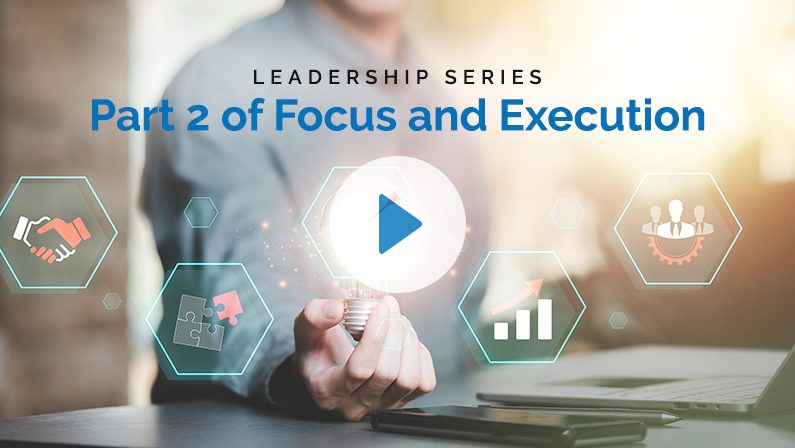Welcome to this segment of our leadership series.
I wanted to go into a little bit more detail on the session we did on focus and execution just prior to the holiday in anticipation of our webinar that’s going to be coming up in the first quarter.
And there are two specific areas that I want to drill in in this short spot.
- One is that 90 day roadmap and the planning.
- And the other is how that relates to or why it’s so important relative to your focus and execution.
So if you recall, I mentioned that in many cases, in my experience, it’s extremely difficult to plan at a detailed level, at an activity-based or a day-to-day level, what you’re going to be doing out past the 90 days. Certainly your plans and your milestones and what you need to achieve can be documented, but to really get down into the details and what the impact is going to be operationally on a day-to-day level is extremely difficult to do past the 90 days. It also is difficult to keep the focus.
In other words, there will be impacts, there’ll be external influences that you have no control over. If you’ve underestimated the day-to-day activities, that are going to impact your initiatives in your roadmap, you’re going to struggle to meet those expectations or the outcomes that you’re planning for.
That’s why that short-term, kind of that 90-day window, you can really dig in and plan those activities on a day-to-day basis because you can factor in the roles that people play.
Certainly your plans and your milestones and what you need to achieve can be documented, but to really get down into the details and what the impact is going to be operationally on a day-to-day level is extremely difficult to do past the 90 days. It also is difficult to keep the focus.
In other words, there will be impacts, there’ll be external influences that you have no control over. If you’ve underestimated the day-to-day activities, that are going to impact your initiatives in your roadmap, you’re going to struggle to meet those expectations or the outcomes that you’re planning for. That’s why that short-term, kind of that 90-day window, you can really dig in and plan those activities on a day-to-day basis because you can factor in the roles that people play.
Not everybody is dedicated to a specific initiative they may have operational duties, or they may play multiple roles within a particular initiative. That’s why you need to evaluate them, see what other things are going to potentially impact from a time and resource perspective that might cause you to lose focus or lose momentum with what you’re doing. So if you did an annual plan or if you did a three-year plan or a five-year plan, breaking it down into those 90-day roadmaps helps you really keep the focus on what you’re supposed to be executing. You can put that into your weekly reviews. You can put it into your monthly progress. You can chart against your short-term wins. You can look at high-impact, high-value things without impacting the focus.
Hopefully, you’ve built some slack time into your roadmap because there will be external impacts, things that either cause you to have to focus on something else temporarily. So building the slack time in is critical, but having that short-term, more detailed activity-based roadmap is really going to help you keep the focus and keep from being distracted because those are the things that the best laid plans then become impacted by.
So if you’re, if there are things happening externally. And in many cases, things do move quickly, which is why a lot of companies have moved away from traditional annual planning and more towards short term planning.
So sketch out your strategic pillars, but then build your plans based on a three plus nine or six plus six and nine and constantly evaluate where you’re at so that you can adjust.
You know, the paradox is really that the discipline is where you gain the freedom. In other words, knowing exactly where you’re at in terms of resource, time, money, you can then understand it gives you the freedom to adjust and move in different directions when you need to.
So I wanted to spend a little bit of time just going into that, tease you a little bit on our upcoming webinar.
Please check out our blog and our video series on our website. website, Huntleigh.com. Also here on LinkedIn. And we’ll look forward to hearing from you. Thank you.





